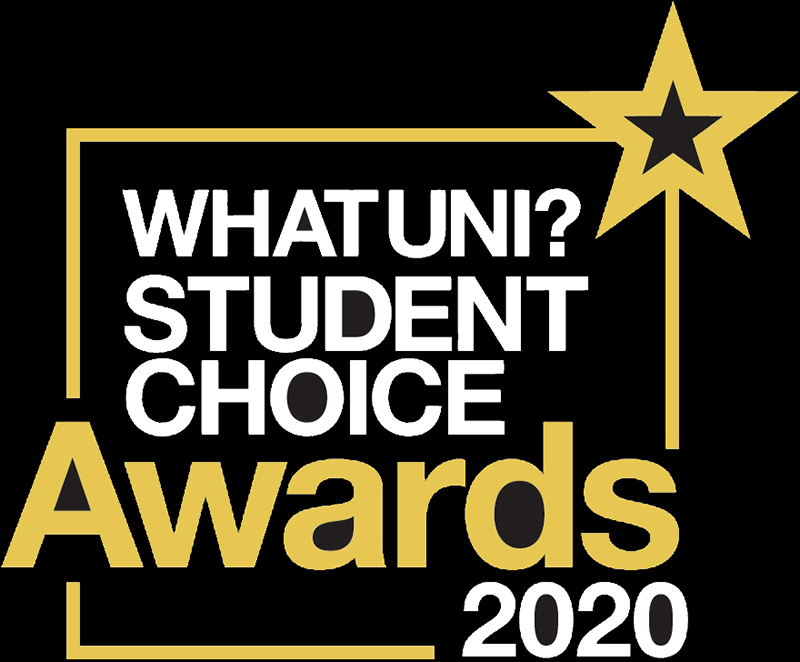This website uses cookies so that we can provide you with the best user experience possible. Cookie information is stored in your browser and performs functions such as recognising you when you return to our website and helping our team to understand which sections of the website you find most interesting and useful. For full details on the cookies used on our website, please visit our Cookies Policy page.
BA (Hons) Digital Animation with Illustration

ANIMATION
You are a creative storyteller with an obsessive passion for animation. You want to develop your technical skills and you love working with the latest technology. If you think this applies to you, then you should apply for this course.
This degree is a mixture of animation and illustration. When we created the course, we spoke to our contacts in the industry and asked them what the course should cover. As well as both 2D and 3D animation, the industry wants people who can draw… and they seem to be in short supply.
For that reason, in the first year you will gain a solid grounding in the fundamentals of illustration and animation. Using light boxes and rostrum cameras you will explore the traditional methods of animation, including the twelve principles of animation that have guided generations of animators. Creative thinking, storyboarding and story structure are all covered and within the first year you will put everything into practise with your own 30 second traditional animation.
In the second and third year, while continuing to develop your illustration skills, you will become proficient in 3D digital animation, covering all the essential skills needed for creating captivating performances in 3D worlds.
You will also cover post-production techniques including editing, layering, adding music and sound effects. The motion capture module will provide hands-on experience of capturing, cleaning and using data captured by the mocap system.
Your third year honours project will become the centrepiece of your portfolio and should reflect the area of animation in which you plan to specialise.
There is also a theory-strand that runs throughout the course covering the historical and contemporary aspects of the subject, culminating in a research dissertation about the animation industry.
WHY SHOULD I CHOOSE THIS PROGRAMME?
By initially focusing on traditional 2D animation skills, the course produces more rounded and proficient 3D digital animators. The illustration aspect to the course makes it stand out from many digital animation degrees and you will enjoy the way we come together as a team to express stories in a fun, creative and exciting way.
As you move on to the digital animation, you will be using the latest versions of industry standard software, like Autodesk Maya, together with the same hardware and workflows that you will find in the real world.
The reason for this is that our tutor team are all industry professionals that either still work within the industry or contribute to current projects on a freelance basis. They feel that it is essential that you understand the way the industry work as soon as you start on the course. This highly experienced team of tutors is augmented with independent animators and professional comic book illustrators who teach specific specialisms and deliver guest lectures.
Finally, all our students really appreciate the smaller class sizes at Futureworks. You can be confident that you will get plenty of one-to-one tutor time when you need it and our students often say that there is a real family feel to the course.
FUTURE OPPORTUNITIES
In your final year, we will be focusing on your future career. We will develop your online portfolio and look at ways of marketing yourselves effectively in this predominantly freelance industry. During your time at Futureworks, you will have many opportunities to make career contacts and we will explore ways of exploiting those contacts, finding jobs and interviews and even work on interview technique.
Students who complete this course can expect to find roles as Illustrators, storyboard artists, 2D or 3D animators and other roles within the animation industry. You could end up working freelance, within animation companies, post production facilities or other sectors of the creative industries.
AWARDING BODY
The final qualification for this programme is awarded by the University of Central Lancashire.
Admissions
START DATES
All of our courses start in September and are full time, 3 year courses. More information on relevant dates can be found on the Term Dates page.
FEES
Tuition fees for UK and Home students who do not require a Student Visa are £9250 per year.
Tuition fees for International students who do require a Student Visa are £17000 per year. Please see International students for full details.
You may be eligible to apply for a student loan from Student Finance. Please see our Tuition Fees page for more information. You may find it beneficial to invest in additional equipment and/or study resources to support your learning. Additionally, there may be the option of attending events outside of Futureworks which would further enhance your studies. We recommend that you budget in the region of £300 to £600 over the duration of the course to cover these expenses.
ENTRY CRITERIA
To be considered for this course, you will require 104-120 UCAS points.
This could be gained via a number of qualifications, for example:
- BCC or above at A2 Level
- DMM or above at Extended Diploma Level
- M or above at UAL Level 3 Extended Diploma Level
- A proven interest in this area
If you’re unsure how many points you have you can use the UCAS tariff calculator.
Remember that qualifications such as Graded Examinations in Music Performance and Arts Award (Gold) can also count towards your UCAS points – check the tariff calculator!
All applicants are expected to have at least a Level 4 or grade ‘C’ in GCSEs Maths and English Language or equivalent. Non-UK applicants will need to have an English Language qualification at International Level B2 or higher, such as an IELTS of 6.0 or better (with no component below 5.5). Students with equivalent qualifications will also be accepted.
Entry criteria for International students will vary. Please see International Students for full details.
Futureworks is able to accept any applications from applicants who require a Student Visa (formerly called Tier 4 Visa) to study in the UK. Please see International Students for full details.
HOW TO APPLY
You can apply for this course by submitting an application via the UCAS system. The UCAS codes for this course are as follows:-
UCAS Code: W216
Institution Code: F98
For information about applying in July and August, please see our Clearing page. Futureworks is currently unable to accept any applications from anyone who requires a Student Visa (formerly called Tier 4 Visa) to study in the UK.
If you have any questions about applying for a degree course please call us on 0161 214 4602, email [email protected] or look at our Admissions FAQs.
APPLICATION PROCESS
If your application is successful, you will be invited to an interview where you will have the opportunity to talk about your work, influences and interests. A guide will be sent with your interview details to help you prepare for your interview. Ideal applicants will have a keen interest in animation, illustration, and production. You will be asked to bring any relevant examples of work with you, in the form of a portfolio. The portfolio is required for this course and applications will not be considered without the provision of a portfolio.
For your portfolio we recommend including some observational drawing, ideally life drawings. Experience in digital working and animation is not necessary prior to starting the degree, but if you have explored any of these avenues already then we’d love to see them. Other than that, bring in any work you are particularly proud of, between 8 and 10 pieces in total, and be prepared to talk through your working process in the interview.
Structure
AWARD: Bachelor of Arts Honours Degree
DURATION: 3 Years (Full Time)
AWARDED BY: University of Central Lancashire
MODULES:
YEAR 1
Fundamentals of 2D Animation (20 credits) – working in 2D (both traditional and digital) you will put together a portfolio of very short, animated clips demonstrating the 12 principles in action
Year 1 Animation Project (20 credits) – combine the lessons learned in Fundamentals of 2D and create your first original short film, animated in 2D and roughly 30 seconds in length
Pre-production (20 credits) – scriptwriting, character design, expression sheets, turnarounds, backgrounds, and layouts, storyboarding and animatics: everything needed for animation minus the animation, in other words
History of Animation and Illustration (20 credits) – lectures focusing on the history of animation and illustration, giving context to the skills learned in other modules and how these emerged historically
Fundamentals of Illustration (40 credits) – the first semester focuses on technical drawing skills (anatomy, proportion, line of action, perspective, colour theory, etc) and the second on creating a portfolio of creative works
YEAR 2
Fundamentals of 3D Animation (20 credits) – an introduction to Maya, focusing on how to utilise the 12 principles within a 3D animation environment
Year 2 Animation Project (20 credits) – draw on the lessons learned in Fundamentals of 3D to create a movement-oriented short film; an obstacle course animated in 3D, roughly 30 seconds in length
3D Modelling (20 credits) – learn the fundamentals of 3D modelling in Maya, allowing you to build basic 3D environments in which to set your 3D animations
Post-Production and Motion Graphics (20 credits) – work with an industry partner, who will set a brief and, after a semester of teaching focusing on editing, post-production effects, and motion graphics, pitch your response to the brief back to that industry figure
Contemporary Animation and Illustration (20 credits) – a continuation of the History of Animation and Illustration module, only now it’s focused on the contemporary moment, current issues, and trends
Applied Illustration (20 credits) – construct a portfolio of illustrations in response to weekly briefs in semester 1, with a storybook/comic project in semester 2 introducing long-form illustration
YEAR 3
Honours Project (40 credits) – your chance to develop your specialism, working on a project you design in collaboration with the module lead
Year 3 Animation Project (40 credits) – your final year film is based around a piece of audio found by you, of roughly 30 seconds length, that can be animated in either 2D or 3D
Motion Capture (20 credits) – learn how to capture actor’s performances in our industry-standard motion capture suite at Futureworks Studios, MediaCity, and then integrate this capture information into your 3D animation projects
Personal Portfolio Development (20 credits) – a module focusing on getting you a job: everything from CVs, websites, showreels and portfolios, to how and where to network, interview practice and how to find work as a freelancer
WHAT ARE CREDITS?
As a guide, 20 credits typically represents around 52 hours of tutor contact time (e.g. lectures/workshops/feedback) and 148 hours of self-study time (usually over the course of a semester). These numbers may increase or decrease depending on the nature, length and level of the module, especially towards the end of the course.


